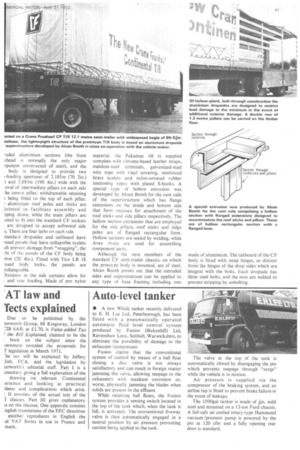Auto-level tanker
Page 39

If you've noticed an error in this article please click here to report it so we can fix it.
• A new Whale tanker recently delivered to E. H. Lee Ltd, Peterborough, has been fitted with a pneumatically operated automatic fluid level control system produced by Fusion (Bickenhill) Ltd, Ravenshaw Lane. Solihull, Warwickshire, to eliminate the possibility of damage to the exhauster /compressor.
Fusion claims that the conventional system of control by means of a ball float closing a disc valve is not always satisfactory and can result in foreign matter jamming the valve, allowing seepage to the exhausters with resultant -corrosion or, worse, physically jamming the blades when solids are present in the effluent.
While retaining ball floats, the Fusion system provides a sensing switch located in the top of the tank which, when the tank is full, is activated. The conventional fiveway valve is then automatically engaged in a neutral position by air pressure preventing suction being applied to the tank. The valve at the top of the tank is automatically closed by disengaging the pto which prevents seepage through "surge" while the vehicle is in motion.
Air pressure is supplied via the compressor of the braking system, and an, airline tap is fitted to prevent brake failure in the event of leakage.
The 1500gal tanker is made of kin. mild steel and mounted on a 13-ton Ford chassis. A fail-safe air cooled rotary-type Hammond vacuum /pressure pump is powered by the pto at 120 cfm and a fully opening rear door is standard.












































































































